All products featured are independently chosen by us. However, SoundGuys may receive a commission on orders placed through its retail links. See our ethics statement.
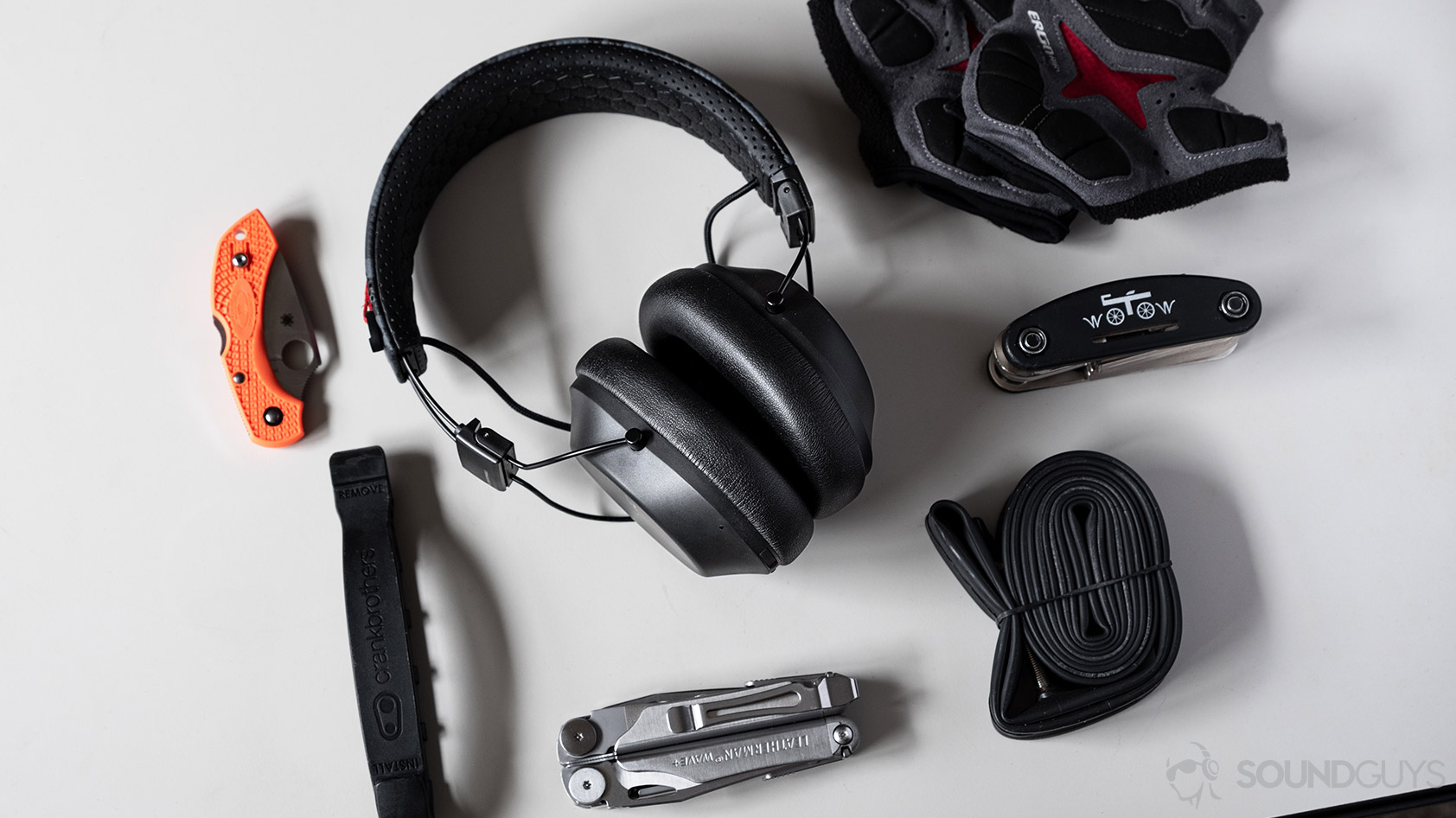
Plantronics BackBeat FIT 6100 review
April 21, 2022
Plantronics BackBeat FIT 6100
Workout headphones are a hard sell: they’re bulkier and less comfortable than their in-ear counterparts. However, the Plantronics BackBeat FIT 6100 is a game-changer; this headset is IPX5 water-resistant, has excellent battery life, and has a neat clamping force-adjustment mechanism for your most rigorous workouts. For just under $59 USD, this is one of the best over-ear headphones athletes can get.
We spent two weeks using the Plantronics BackBeat FIT 6100 to inform you of everything you need to know before you buy.
Editor’s note: this Plantronics BackBeat FIT 6100 review was updated on April 21, 2022, to update the score with results from our reader poll, add in-line FAQs, and include a controls section.
- Athletes who prefer an over-ear fit will love the Plantronics BackBeat FIT 6100. These are durable, versatile workout headphones are a great value. Battery life is excellent and quick charging is supported, which is great on the off-chance you arrive at the gym and the battery is dead.
- Anyone can use these workout headphones, so long as you don’t mind the bass-heavy sound signature.
What’s it like to use the Plantronics BackBeat FIT 6100?
The Plantronics BackBeat FIT 6100 by Poly is one of my favorite workout headphones to date: they’re slim, lightweight, water-resistant, and comfortable. Not only do the headphones have all the exercising necessities, but it’s painstakingly obvious that Plantronics paid attention to the little things when crafting this headset.
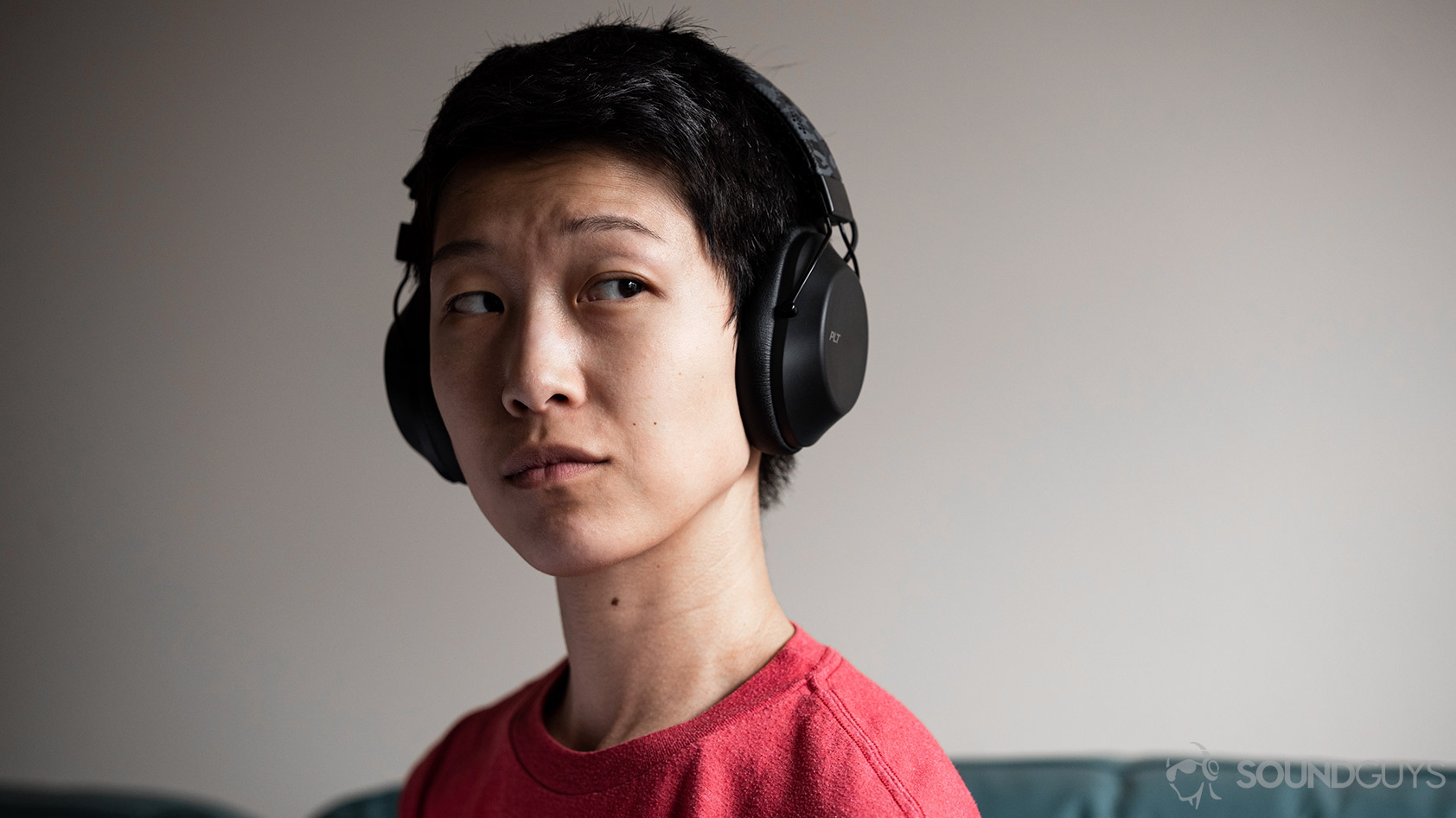
Unlike other on-ear workout headphones that place a painful vice-grip atop your head, Plantronics’ headphones use a novel headband adjustment mechanism that temporarily tightens the fit when you need it. Once you’re done working out, you can release the tension cord and reattach it to the original position for a more comfortable fit.
Start here: Ultimate headphone buying guide
On the interior side of the headband is a hexagonal quilted pattern; this helps the headphones grip to the head without relying on hair-pulling rubberized material. Again, it’s a minor difference, but the cushioned pattern is more gentle on the skin or scalp, lessening the chance of hot spots or general discomfort.
If I had to pick, the Plantronics BackBeat FIT 6100 would be my go-to workout headphones.
The ear cups’ oval shapes naturally contour to the oblong shape of the ear, and inside are angled drivers that deliver sound directly down the ear canal for greater clarity and less resonance in the space between the driver and outer ear. The memory foam padding is great and even plays nicely with glasses.
How do you use Plantronics BackBeat FIT 6100 controls?
Moving down to the ear cups: the right ear cup is equipped with a Bluetooth/power toggle and ambient aware mode, which is a must-have for outdoor enthusiasts. There’s also a touch-capacitive panel for accessible controls for playback, incoming calls, and virtual assistant access. I much prefer touch controls, assuming they’re reliable, when exercising because I often struggle to find on-board buttons mid-run. Unfortunately for this headset, the right panel isn’t very precise and is far too sensitive for my liking. Music was often paused when I was simply trying to adjust the headband length.
Should you download the Plantronics app?
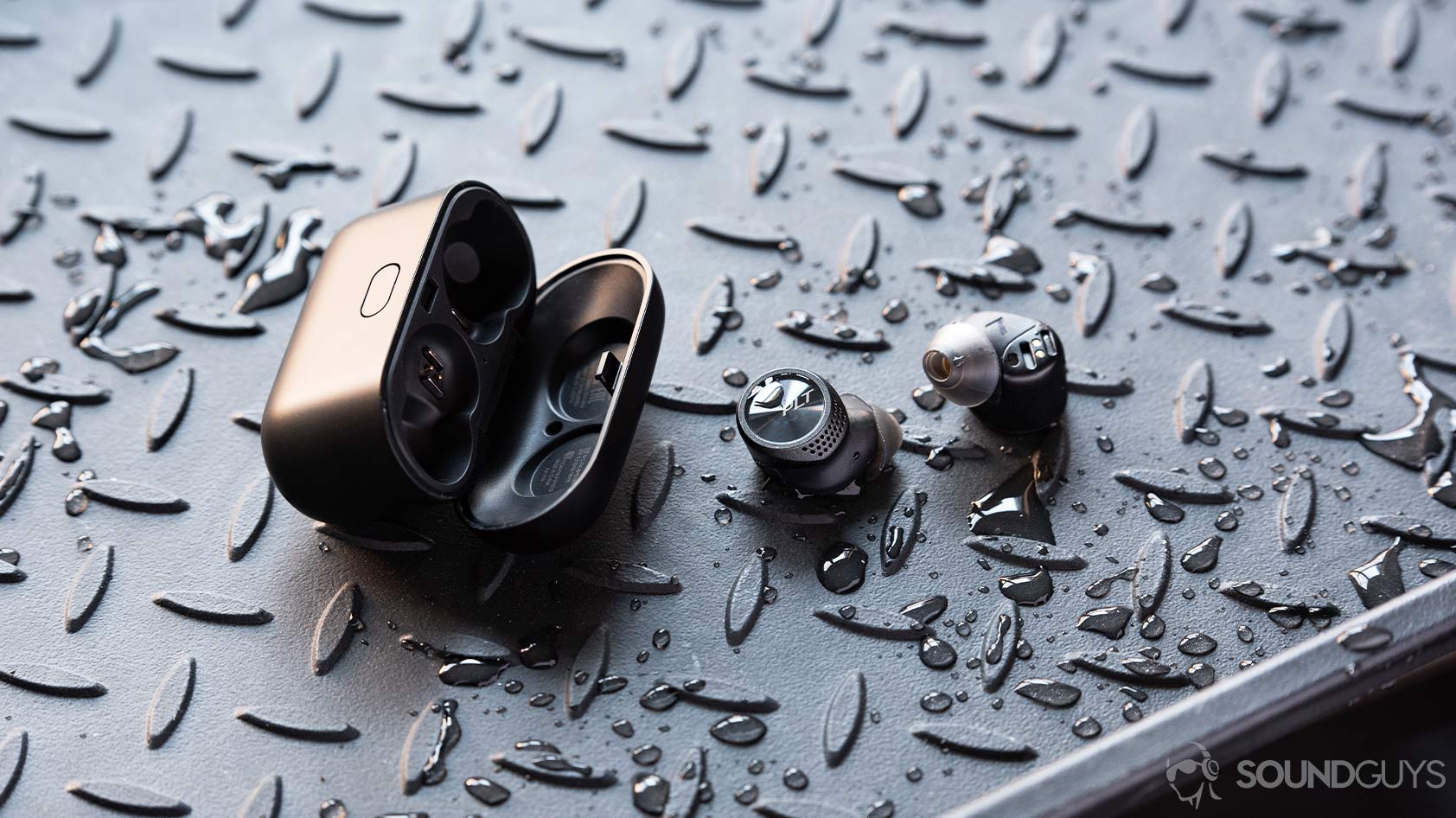
To call the app useful is a stretch. While this seems harsh, it’s really just not worth the space on your phone as there are few customization functions provided aside from the three EQ presets. The company tries to introduce fitness-oriented features like a timer, stopwatch, or access to a go-to playlist from Spotify or Apple Music, but it seems forced and redundant seeing how you can do all of this from your phone sans-app.
It is, however, useful for firmware updates, but you can just stay tuned here as we’ll update this review if and when a relevant update is released.
How do you connect the Plantronics BackBeat FIT 6100?
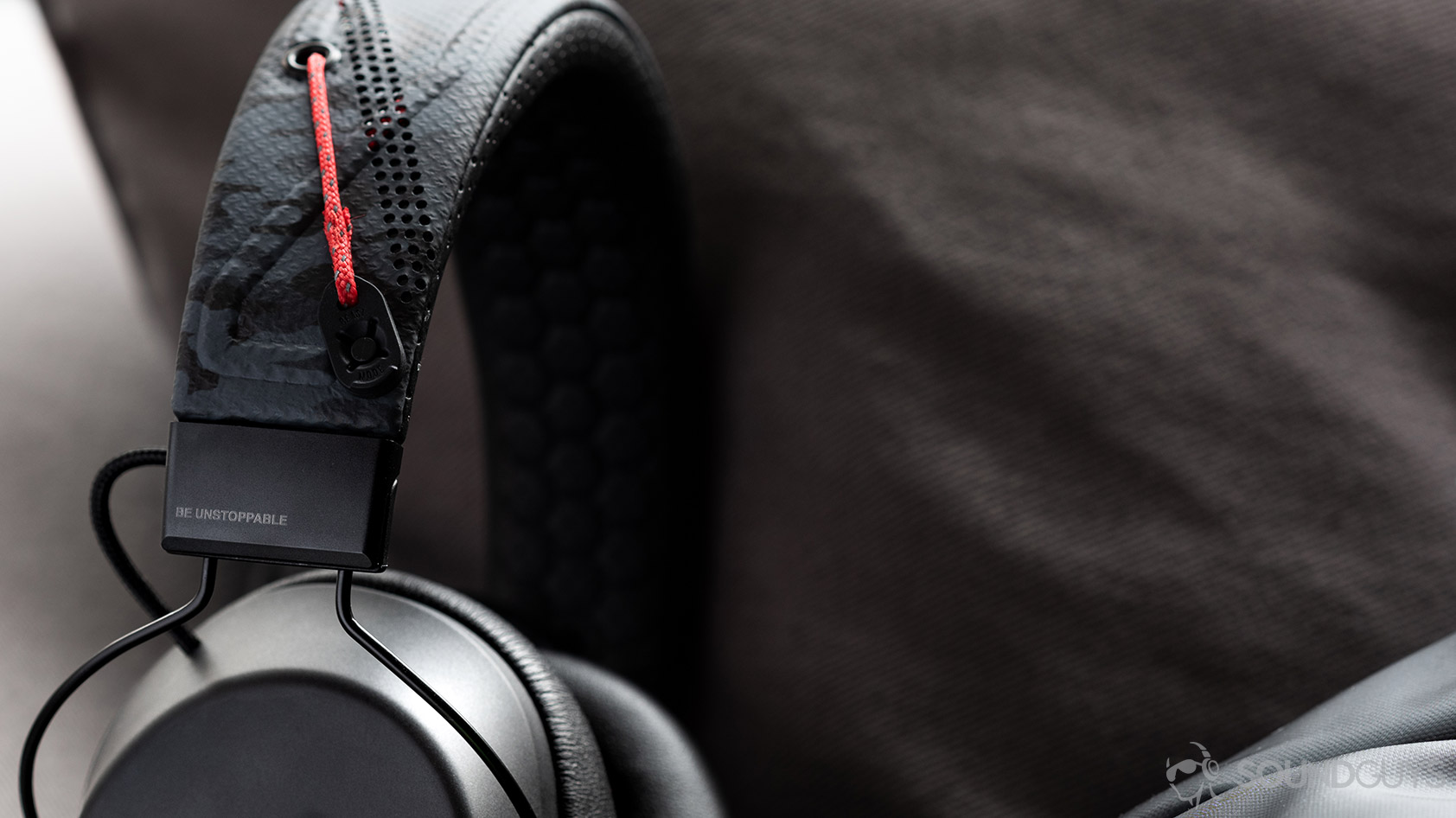
Turning the headset on for the first time initiates pairing mode, to forge a connection to your smartphone, enter the Bluetooth settings and select “PLT BBFIT6100.” Like other Plantronics products, this headset supports Bluetooth multipoint: you can simultaneously connect up to two devices to the BackBeat FIT 6100, and it can remain paired to eight devices for quick source switching. Plantronics provides a microUSB-to-3.5mm cable for wired listening, if you’re one of the lucky few whose phone retains the headphone jack. No matter how you listen, sound quality is surprisingly good even with the emphatic bass response.
The touch panel is very sensitive, causing accidental commands when adjusting the headband.
When going wireless, you’re afforded a 20-meter range from the Bluetooth 5.0 cans. AAC is the only supported high-quality Bluetooth codec, meaning we Android users don’t have the luxury of aptX streaming and are instead bumped back to SBC. That’s fine though, since finding a proper fit matters just as much if not more than what codecs are supported.
How long is the battery life of the Plantronics BackBeat FIT 6100?
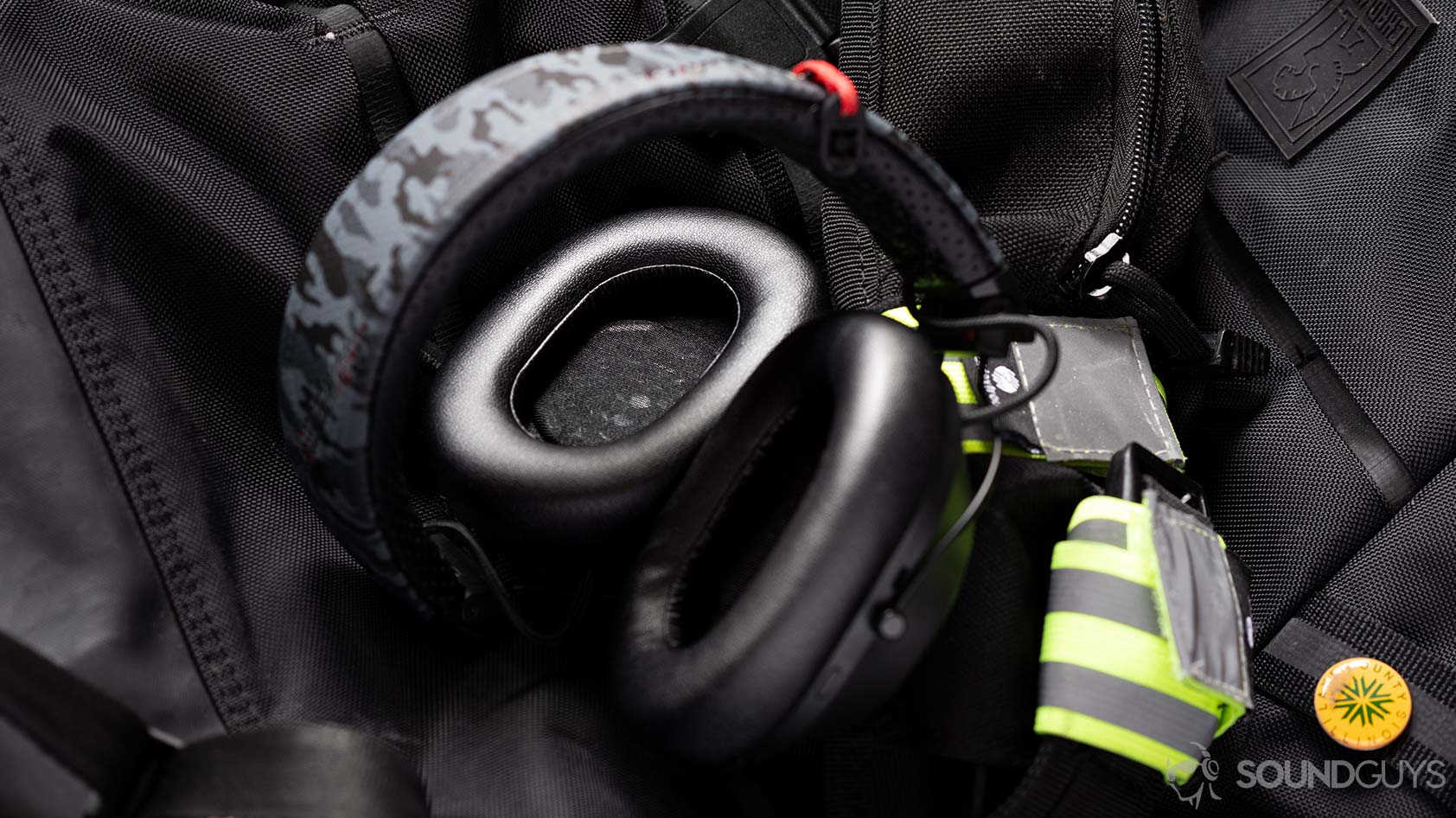
Plantronics lists a 24-hour battery life for the BackBeat FIT 6100; our testing yielded great results: 26 hours, 49 minutes of playtime on a single charge. When the headset is drained, you can plug it in using the included microUSB cable for 15 minutes if you need just six hours of playtime. Otherwise, it takes two hours to complete a full charge. Oh, yes, you did read that correctly: Plantronics is still using microUSB for its headsets, even though budget earphones can afford USB-C while keeping costs low. Its presence is inconvenient but easily forgiven.
Does the Plantronics BackBeat FIT 6100 block out noise?
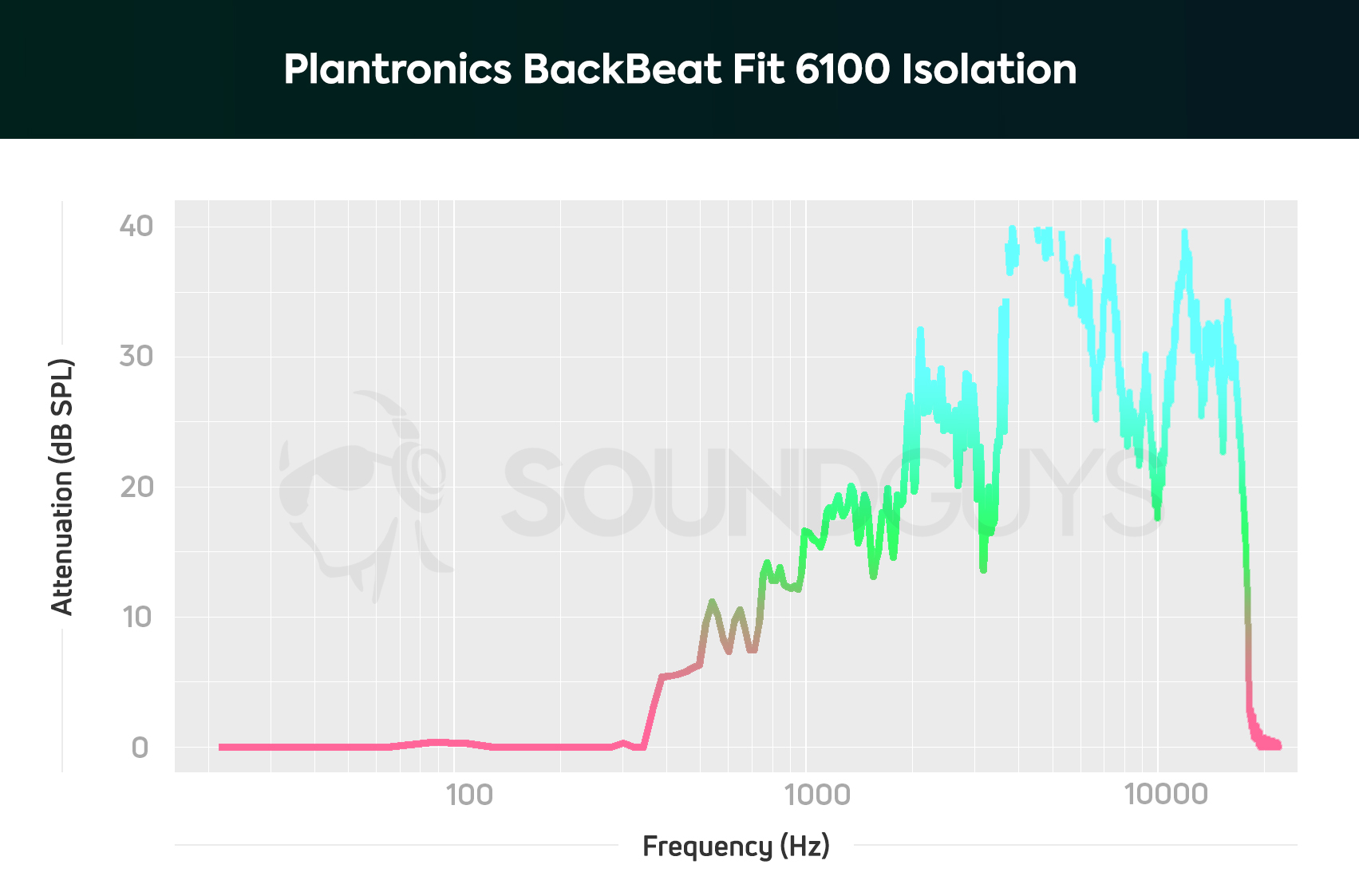
Isolation is fine. The headphones do a good job at filtering out midrange and high-pitched noises but are no match for low-frequency sounds like your washing machine, dryer, or vacuum. If you want something more effective while staying within a budget, consider the Monoprice BT-600ANC.
Hold up! Something’s different:
This article’s frequency response and isolation charts were measured with our old testing system. We have since purchased a Bruel & Kjaer 5128 test fixture (and the appropriate support equipment) to update our testing and data collection. It will take a while to update our backlog of old test results, but we will update this review (and many others!) once we’re able with improved sound quality measurements, isolation performance plots, and standardized microphone demos. These will be made obvious with our new chart aesthetic (black background instead of white). Each new mic sample begins with the phrase, “This is a SoundGuys standardized microphone demonstration …”
Thank you for bearing with us, and we hope to see you again once we’ve sorted everything out.
How do the Plantronics BackBeat FIT 6100 sound?
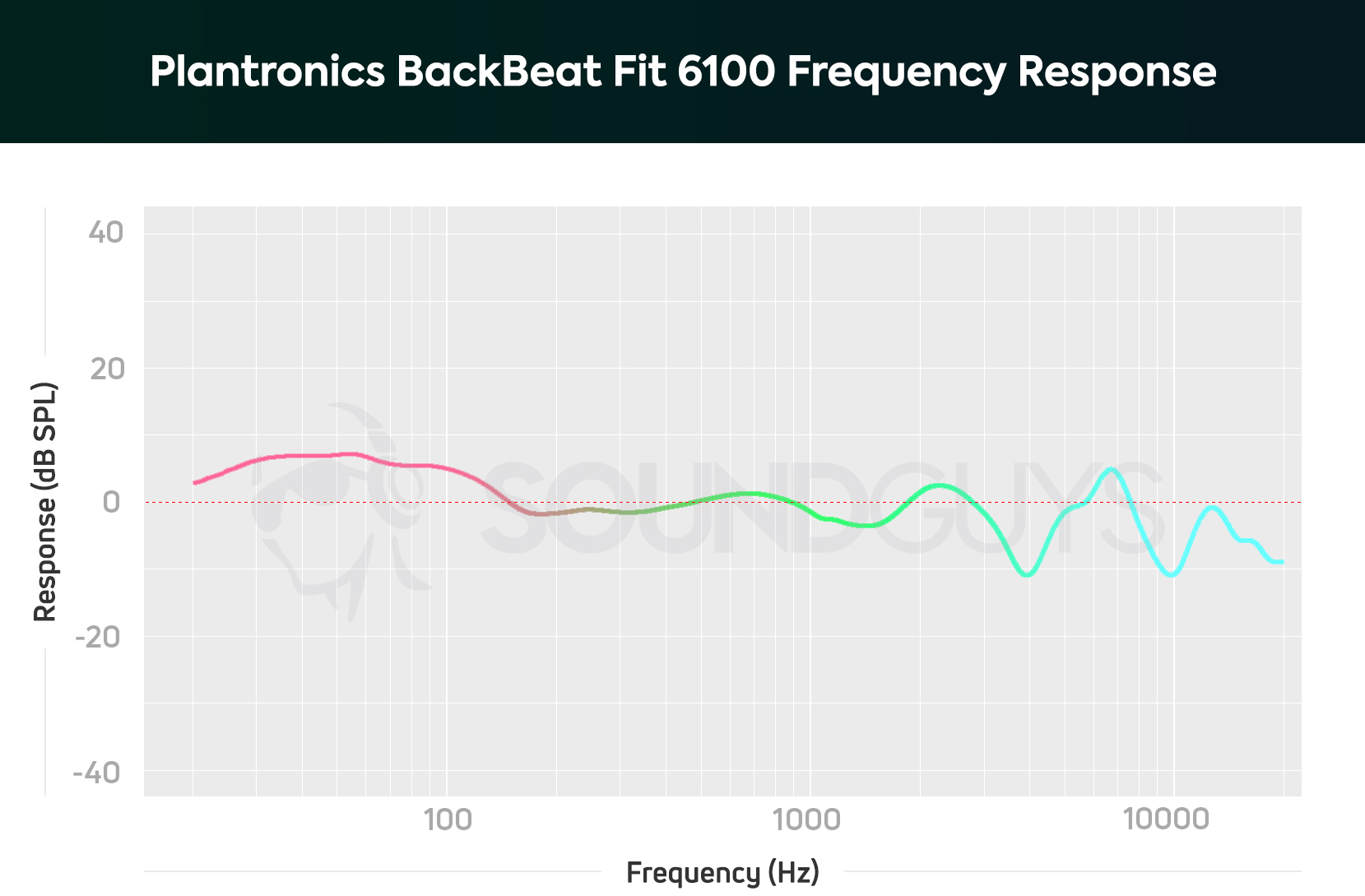
Each ear cup houses a 40mm dynamic driver for pumping out those beloved bass notes. If you’re an audio purist, skip ahead to our list of the best studio headphones, because you’ll get no joy from the BackBeat FIT 6100 frequency response. Bass notes are twice as loud as midrange and treble notes, which makes it hard to hear some musical detail. While I don’t recommend these headphones for analytical listening, I thoroughly enjoy the sound when stationary biking.
Lows, mids, and highs
In Allen Stone’s song Satisfaction, clarity is, well, clearly lacking. Stone’s raspy, soulful vocals are masked by the louder, lower-pitched guitar effects and drum hits. This is immediately apparent during the first chorus; skip ahead to 0:40 when Stone belts out the line, “So, what’s it gonna take? How many hearts you gonna break ‘fore you find satisfaction?” Stone’s vocals are rendered difficult to perceive due to all of the simultaneous noise emitted from the accompanying instruments, specifically the electric guitar during the first line of the chorus.
The sound quality isn't exactly pristine, but if you like a strong bass response above all else, they should suit you fine.
As you might expect, sound quality declines as more instruments are introduced on a track. During the bridge (2:02), the drummer’s cymbal hits are hard to discern over the kick drum and even Stone’s melodic whistling. All this is to say, the headphones aren’t great for listeners looking for neutral reproduction of their favorite songs. If, however, you enjoy bass-heavy music or just like more oomph at the expense of clarity, then the BackBeat FIT 6100 cans will sound great to your ears.
Can you use the Plantronics BackBeat FIT 6100 for phone calls?
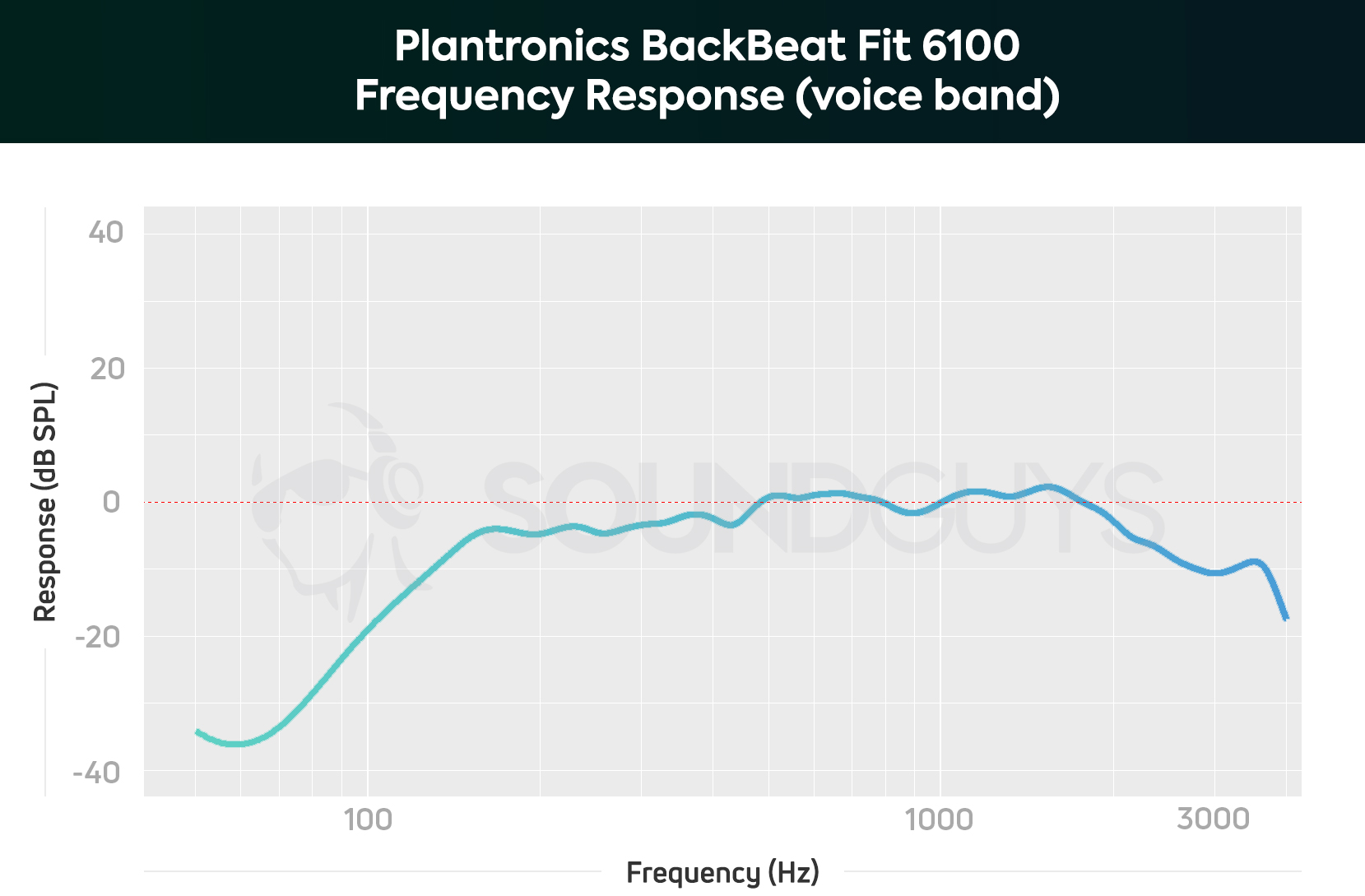
The extreme attenuation between 20-170Hz makes nearly everyone sound “off” or distant during calls. What’s more, the microphone array doesn’t amplify voices when recording, so if you’re in a particularly loud environment, the person on the other end of the call may have trouble hearing you. No matter, quality is fine enough for casual calls and should suit most users for brief professional calls, too.
Plantronics BackBeat FIT 6100 microphone demo (Old):
How does the microphone sound to you?
As of April 21, 2022, nearly 49% of respondents have rated the microphone sample as “okay,” which is average for this kind of system.
Should you buy the Plantronics BackBeat FIT 6100?
The Plantronics BackBeat FIT 6100 is a diamond in the rough. Sure, the sporadic static noise when using with a Macbook Pro is annoying and even alarming at times, but that may very well be a quality control issue, rather than a systemic problem. You’ll be hard-pressed to find a comparably priced pair of workout headphones that provide this level of comfort and functionality—especially at the new affordable price point. If you’re an athlete with an aversion to earbuds, the Plantronics BackBeat FIT 6100 are the headphones for you.
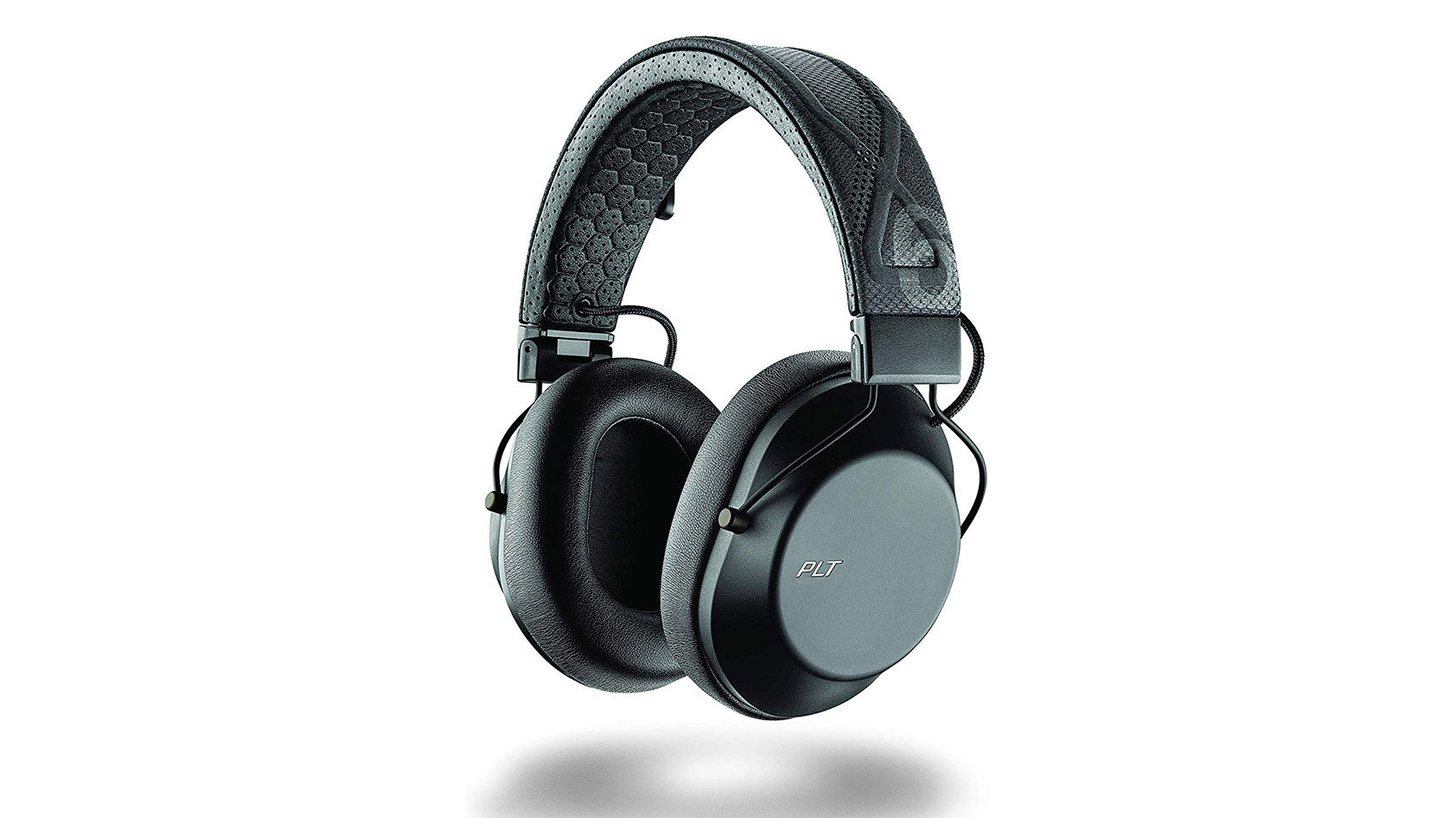
Plantronics BackBeat FIT 6100 vs JBL UA Sport Wireless Train
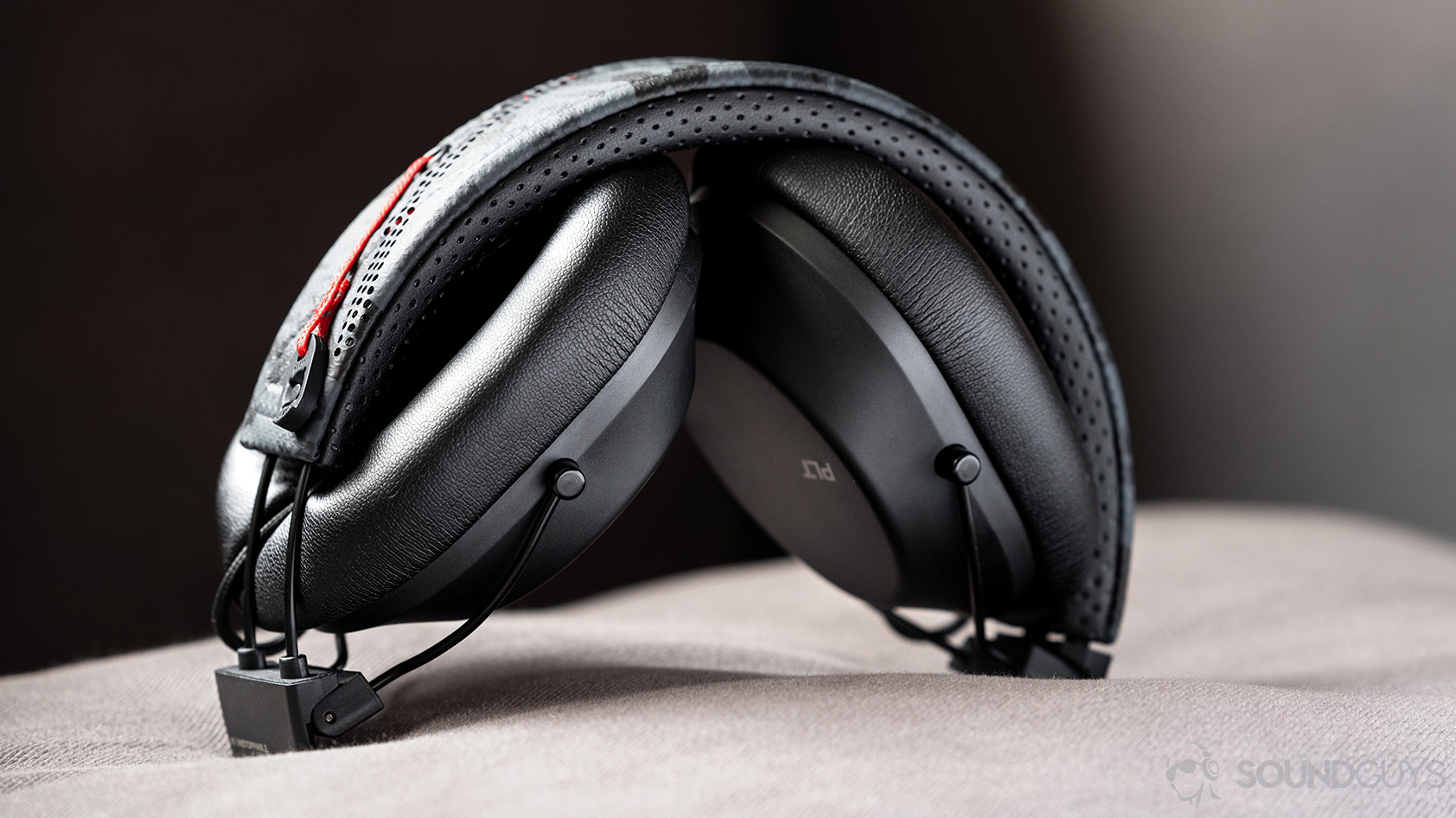
These are two completely different beasts: the Plantronics headset has an over-ear fit while the JBL UA Sport Wireless Train has an on-ear fit, which is more snug on the head. JBL’s headphones may be less comfortable due to the pressure placed on the ears, but that’s ok seeing how they’re billed strictly as workout headphones. JBL’s cans are sweatproof and have a less impressive battery life of 16 hours, compared to Plantronics’ measured 26-hour battery life.
Just like the BackBeat FIT 6100, you can amplify external noise through the headset if you need to speak to a gym partner or hear your surroundings outdoors. Additionally, both headsets support quick charging: the JBL UA headphones provide one hour of playback after just five minutes of charging.
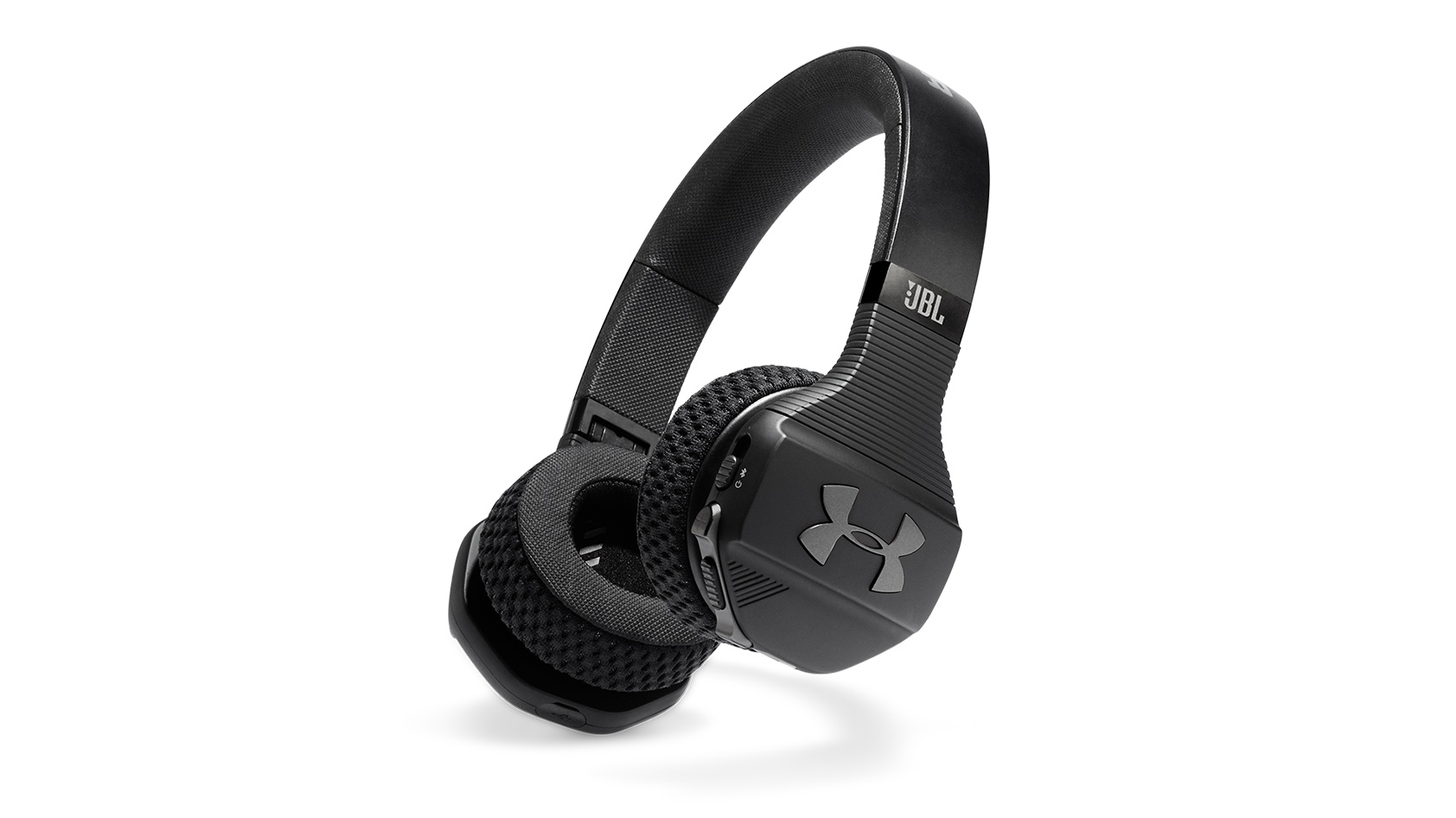
If you prefer tactile controls, you may want to get the JBL headphones over Plantronics’ because the controls are huge and easy to access even with sweaty palms. What’s more, the earpad material is more breathable than what’s used on the BackBeat FIT 6100. However, there are some drawbacks to the on-ears like outdated Bluetooth 4.1 firmware and a lack of multipoint support. They’re also more expensive than the Plantronics headset, so if you want to save $30, go with the over-ears.